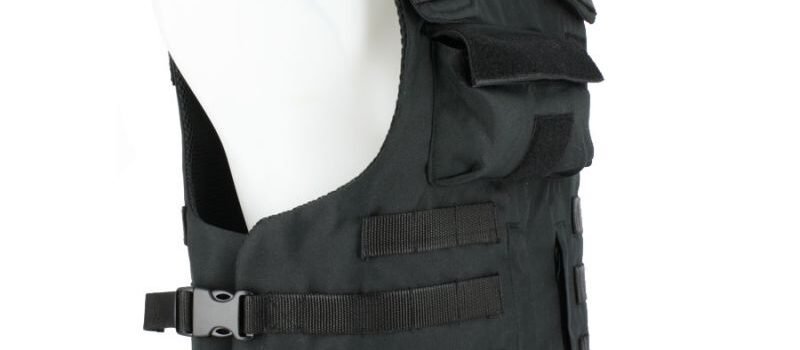the bulletproof vest is protective equipment absorbing bullet holes, mainly made with tightly woven fibers like kevlar.
We will provide you with some details on the plates themselves, before discussing the materials used as well as the levels of protection. We will end with the importance of size to ensure good protection.

The GPB protects the wearer against projectiles derived weapons or from grenades for example. Additional plates in metal or in ceramic can be slipped into the pockets provided for this purpose on the front and back of the vest in order to stop ammunition from a higher power. They add significant protection but also increase the weight of the vest. Metal or ceramic plates are generally used by national armies where the special forces intervention like the GIGN, the SWAT where the RAID. Bulletproof vests are not invincible, and powerful weapons can pierce them.
Basic Kevlar vests offer Level II or Level IIIA ballistic protection like the brand’s vests The protector.
The plaques

It exists Several types protective plates such as metal and ceramic plates. Those made of metal are generally considered to be the best for reducing blunt trauma thanks to the lconductive ignes of the material.
It is not necessary never wash ballistic plates with detergents or water from bleach, the ballistic quality would be destroyed and your plate would no longer protect you.
In order to clean its ballistic plates, use a soft cloth or a sponge very slightly damp with soap without products corrosive then wipe quickly with a dry cloth. It is important to always store a bulletproof vest in its carrying case flat, on a shelf for example.
The subjects
The plates ceramic offer very high ballistic resistance. However, they are not very good at reducing blunt trauma. As a result, they are often held together by materials such as aramid based fabrics, high density plastics, and / or metals.
The plates polyethylene also called DYNEEMA are made from new, very resistant materials, currently with the highest impact resistance of all thermoplastic compounds. They are very resistant to corrosive chemicals, except acids, they have low moisture absorption and a very low coefficient of friction. These plates are self-lubricating and can be up to 15 times more abrasion resistant than steel.
The plates kevlar are stronger than those made of steel and lighter. Nevertheless, kevlar has a high thermal absorption as well as a very poor resistance to UV2. It has very good resistance to traction, chemicals to fuels, shock absorption and thermal expansion. It withstands temperatures from + 450 ° C to -160 ° C.
The plates nanomaterials as the nanocarbone offer a weight / resistance ratio that exceeds current materials, but very few products made from “nanomaterials” are currently on the market.
Resistance levels
Each plaque possesses a level from protection Who protected vs some types from ball, plus level is raised plus your protection is accrue.
Here is a detail of the different protections to protect you effectively:
Size
The most common forms of the plaques are the rectangle, the rounded rectangle and theirregular hexagon.
The purpose of the plaques is to cover hidden vital organs in the rib cage. Each individual has a different body structure, so the size of the plates should be suitable for body physiology or breast size.
There is no one size fits all plate size fits all and the choice of plates should be guided by the physique of the user.

The plates are usually 30cm × 35cm with a certain destination depending on the vest. The thickness (depth) varies depending on the material used and the destination of the plate, but rarely exceeds 1 cm.
The plate should cover the circumference of the chest as well as the waist of the potential user. The choice of the appropriate size of the shock-absorbing plates and pads is made according to the measurements of the user, but also of a waist support appropriate for this plate size.
The most reliable solution to determine the correct dimension so that the plate will fit perfectly in your vest is to create a cardboard dummy plate to be taken as a model.
To position your front plate, find the weak point at the top of your breastbone and adjust your support to place the top of it. The back plate must be positioned the same way on your back, one way to find this spot is to look for the most protruding vertebrae at the base of your neck, then place the top of your plate about 10cm below depending on your body type.
From side plates can be used to increase your protection, but it will also increase your weight.
A useful rule of thumb is to make sure your front plate is at least wide enough to cover your nipples.
While there is a weight gain benefit, taking too small a plate will not give you optimal protection. Likewise, taking a plate that is too large excess weight what hinders movement.

